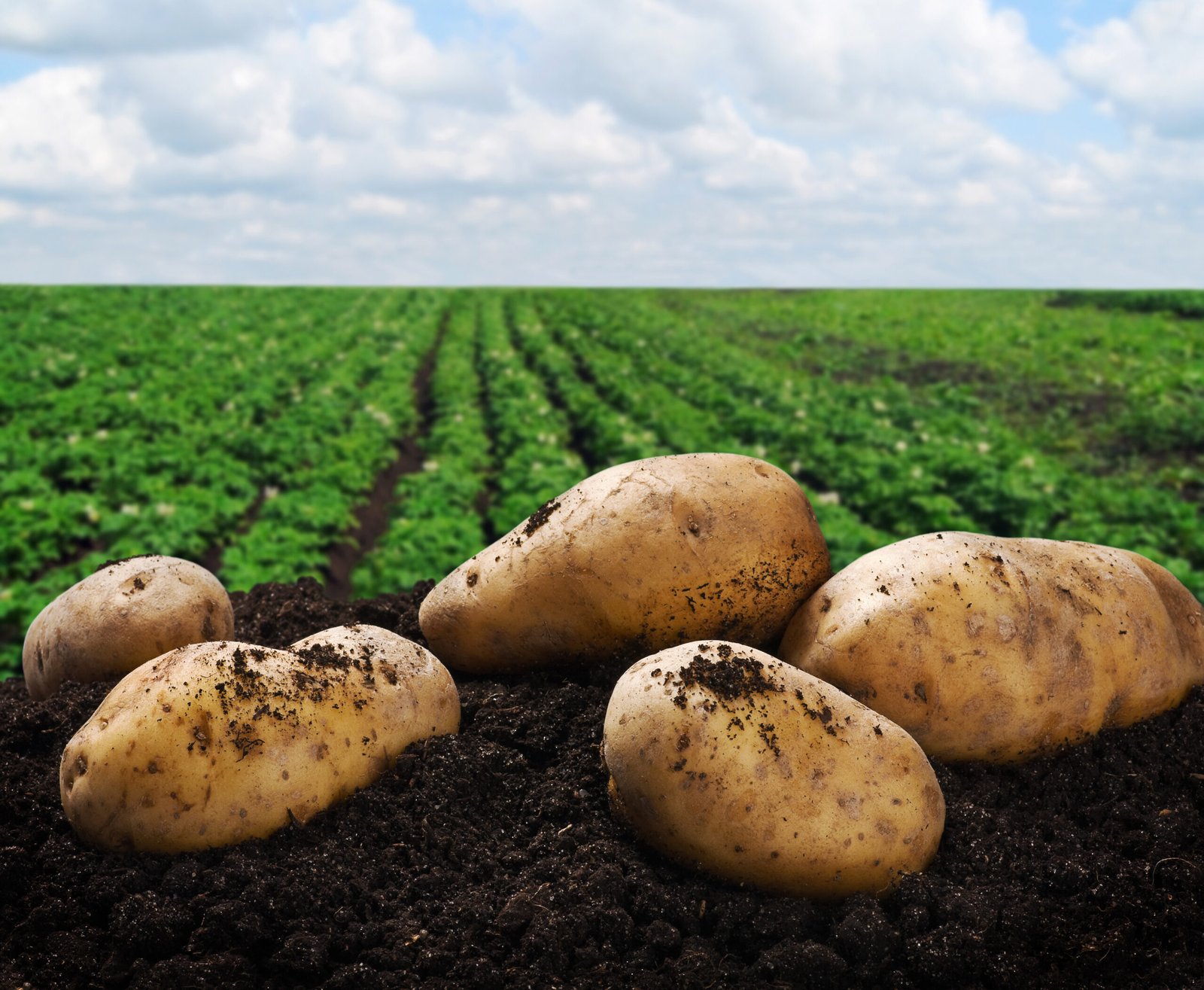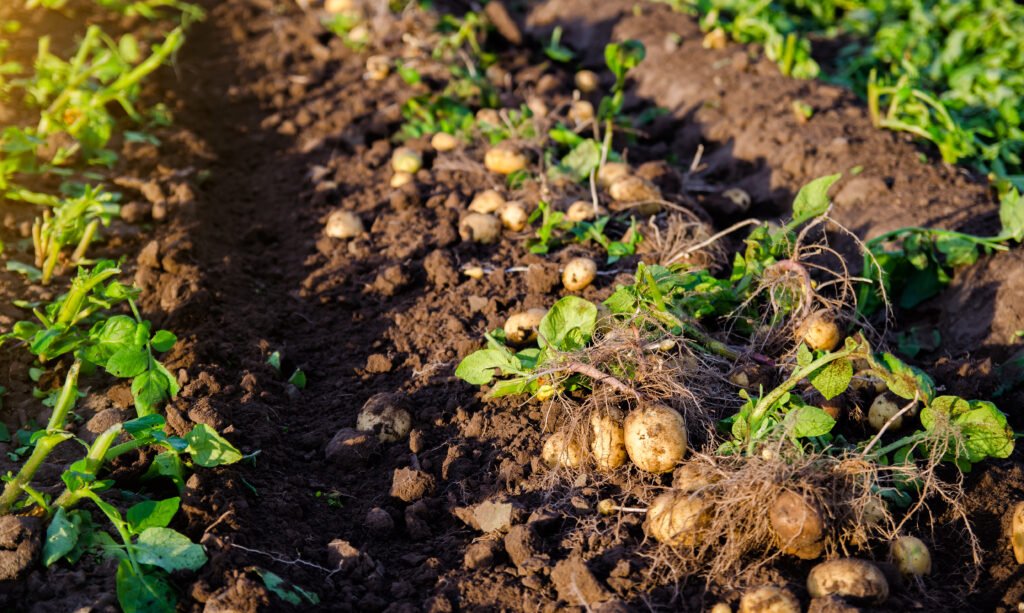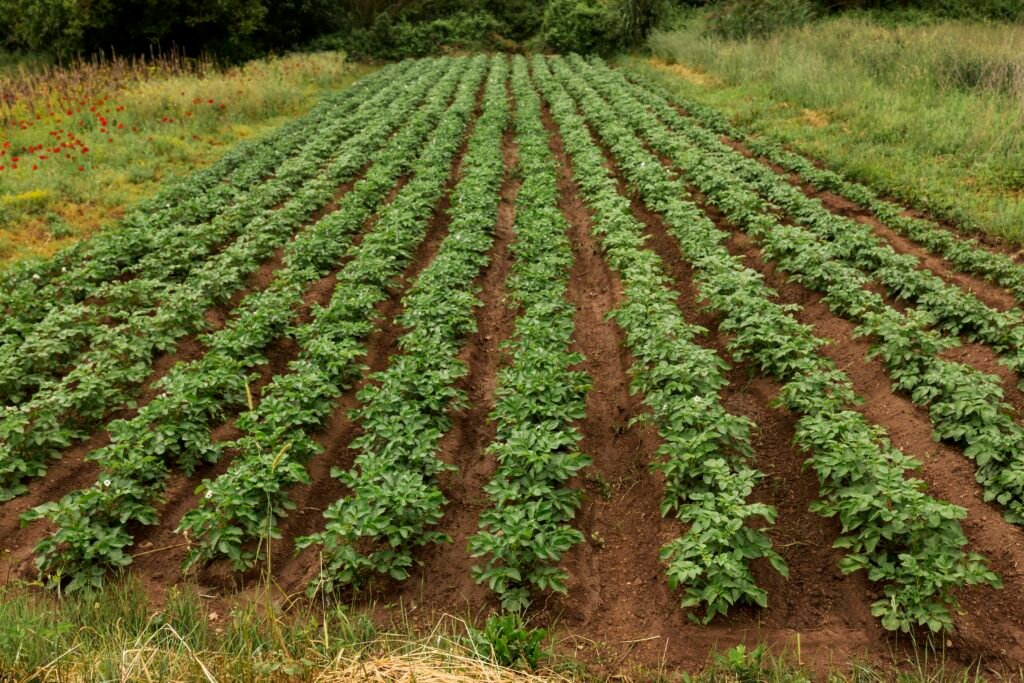Latest News
Potato Cultivation in India | A Profitable Tuber Crop for Every Season

One of the most popular and significant agricultural industries in India is the production of potato Cultivation. In practically every state, but particularly in Uttar Pradesh, West Bengal, and Bihar, potatoes are cultivated as a commercial crop and staple food. The selection of seeds, climate, soil, pest management, irrigation, harvesting, and storage are all covered in this guide to profitable potato cultivation. For Indian farmers, potato cultivation offers a steady source of revenue due to the growing demand from the processed food sector.
Why Potato Cultivation is a Smart Choice
Potatoes (Solanum tuberosum) are a high-yielding crop with short maturity and year-round cultivation potential. They are used for:

-
Direct consumption
-
Chips, fries, and flakes
-
Seed tuber business
-
Animal feed and alcohol production
Farmers prefer potatoes due to:
-
High per-acre yield
-
Short crop duration (70–120 days)
-
High market and export demand
-
Excellent intercropping potential with cereals and vegetables
Ideal Conditions for Potato Farming
✅ Climate
-
Cool and frost-free climate ideal
-
Best temperature: 18°C to 24°C
-
Sensitive to frost and high temperatures
-
Rabi season most suitable in North India
✅ Soil
-
Well-drained sandy loam or loamy soils
-
pH: 5.5 to 6.8
-
Avoid waterlogging and heavy clay soil
-
Soil should be loose for tuber expansion
Top Potato Varieties Grown in India
| Variety | Duration | Features | Regions |
|---|---|---|---|
| Kufri Jyoti | 80–90 days | Early maturing, disease-resistant | All over India |
| Kufri Bahar | 100–110 days | High yield, popular in North | UP, Bihar, Punjab |
| Kufri Pukhraj | 90–100 days | Yellow flesh, heat tolerant | West Bengal, Odisha |
| Kufri Chipsona-1 | 100–110 days | Ideal for chips & fries | Maharashtra, MP |
| Kufri Surya | 75–85 days | Tolerates late blight | South India |
Land Preparation and Planting Method
📅 Planting Season
-
North India: October to December (Rabi season)
-
South India: August–September and January–February
-
Hills: March–May
🚜 Land Prep
-
Deep ploughing and harrowing
-
Apply 15–20 tonnes of FYM per acre
-
Form ridges and furrows (60 cm apart)
🌱 Planting
-
Use certified disease-free seed tubers
-
Seed rate: 8–10 quintals/acre
-
Cut larger tubers into 2–3 pieces (ensure eye in each)
-
Plant at 20 cm spacing on ridges
Irrigation and Nutrient Management
💧 Irrigation
-
First irrigation: 5–7 days after planting
-
Frequency: Every 7–10 days
-
Avoid over-irrigation, especially at maturity stage
🌿 Nutrient Application
-
FYM: 15–20 t/acre
-
NPK (kg/acre): 80:60:60
-
Top dressing of N 30–40 days after planting
-
Micronutrients like zinc and boron improve quality
Pest and Disease Control
🐛 Common Pests
-
Aphids – Vector for viral diseases
-
Cutworms – Damage stems and tubers
-
Tuber moths – Post-harvest pest
🍂 Common Diseases
-
Late blight – Major fungal disease
-
Early blight, scab, and black scurf
🌿 Control Measures
-
Spray neem oil or bio-insecticides
-
Use Trichoderma, Pseudomonas, and crop rotation
-
Certified seeds reduce viral risks
Harvesting and Yield
-
Harvest 70–120 days after planting depending on variety
-
Signs: Yellowing and drying of foliage
-
Stop irrigation 10–15 days before harvesting
-
Harvest gently to avoid tuber injury
⚖️ Yield
-
Traditional: 80–100 quintals/acre
-
Improved methods: 120–150 quintals/acre
-
Proper storage increases returns
Post-Harvest and Storage
-
Dry tubers in shade before storage
-
Store in cold storage (2°C to 4°C)
-
Use sprout inhibitors for long-term storage
-
Store in ventilated godowns if cold storage is unavailable
Market Potential and Profitability
-
Huge demand from snack food industry
-
Export potential to Middle East and Southeast Asia
-
Processors require specific varieties like Chipsona
-
Contract farming opportunities available
💰 Profit Estimate (per acre)
| Item | Cost (₹) |
|---|---|
| Inputs | 25,000–30,000 |
| Yield Revenue | 80,000–1,20,000 |
| Net Profit | 50,000–90,000 |
Government Support and Schemes
-
MIDH: Support for high-quality seed and irrigation
-
NHB & NABARD: Storage subsidy, cold chain setup
-
State Agri Departments: Farmer training and seed subsidy

Fresh potatoes on ground. Freshly dug organic potato vegetables lie on moist, loose ground with tops. Agricultural production. Bountiful harvest Growing food on the farm field. Gardening and farming.
Conclusion: Potato Farming as a Year-Round Opportunity
Potato cultivation provides a fast, high-yielding, and profitable crop option to farmers across India. By using certified seeds, adopting improved techniques, and managing post-harvest effectively, farmers can multiply their income. With rising demand from urban markets and export channels, potatoes will remain a cornerstone of India’s agri-economy for years to come.
FAQs
Q1: What is the ideal season for potato cultivation in India?
Rabi season (October–December) is best in plains; hills prefer March–May.
Q2: Which are the most popular potato varieties in India?
Kufri Jyoti, Kufri Bahar, and Kufri Pukhraj are widely cultivated.
Q3: How much yield can farmers expect per acre?
Average yield ranges from 100–150 quintals/acre with good practices.
Q4: Can potatoes be grown organically?
Yes. Use organic compost, Trichoderma, and neem-based pest control.
Q5: Are there subsidies for potato cold storage?
Yes. NHB and state governments offer support for cold storage facilities.














